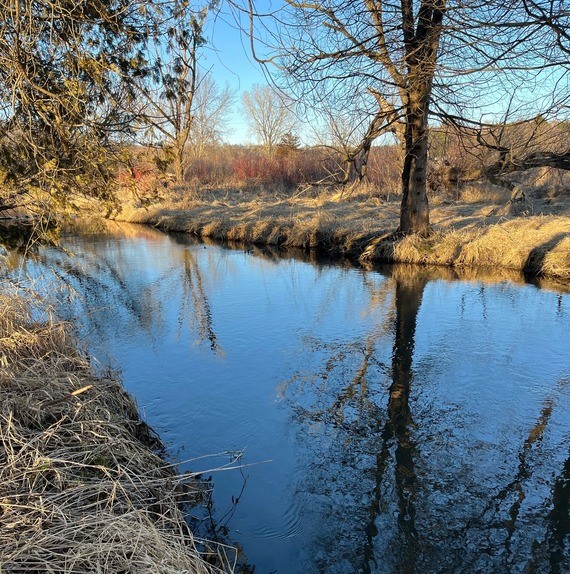Hard To Beat Jigs & Blades
|
Two must-have armaments for the spring walleye run
|
MUSKEGON, Mich. (April 24, 2024) – Given the mild winter, some anglers have been flogging rivers for months already, boating pre-pre-spawn, pre-spawn, spawn, and now post-spawn fish in some areas.
While it doesn’t happen all at once—with waves of fish spawning over days to weeks, some of them visit the same spawning locations year after year. A general rule of thumb is when water temps land between 40 and 52 degrees and the photoperiod aligns, you’ll find female walleyes dropping eggs over shallow, gravel-laden areas with current or wind/wave action. Near them will be plenty of males ready to fertilize the eggs – and eat while in process, biting baits willingly, unlike spawning female fish.
It doesn’t take long for females to do their part, but the males will stick around for days to weeks, the metabolism-drained females slipping out of the current into deeper water to recuperate, not typically paying much attention to natural forage and/or baits. But, once rested, it’s game on.
Experienced river walleye anglers rely on numerous presentations as the mood of spring walleyes changes daily, if not hourly. Every springtime river walleye angler should be prepared to be versatile and run through a lot of baits/rigs, ultimately letting the fish reveal what they want.
|
JIG & MINNOW – VERTICAL & PITCHING PLAYS
Where a lot of anglers start—especially once fish are located—is with the tried-and-true jig and minnow—typically something that resembles the type of bait in the river you’re fishing. Fatheads are cheap and mimic the size of the small emerald shiners and shad that get eaten en masse by walleyes. Rainbows work great, too, and are a bit heartier than run-of-the-mill fatheads and chubs.
You have a couple of choices when fishing a jig and minnow: You can fish them vertically below the boat or make short pitches to current seams, eddies, sand dune troughs, wingdams, riprap, and wood—any kind of current break that might serve as resting points for upstream-migrating walleyes.
Fished vertically, you want to match your jig weight to the current speed. It’s best to carry a selection of jigheads ranging from 1/8-oz. up to ½-oz, although on most rivers, 3/16th, 1/4th, and 3/8th ounce get the most play.
However, on faster-moving waters like the Detroit and Columbia River, you may end up fishing 1-ounce—even 1-ounce and half—jigs to stay vertical. And if the fish are super-shallow—pushed right up on shore—1/8 oz. is a good candidate to prevent snags.
The key is to feel the bottom and limit your movements to small pops or wrist-twitches only a few inches off the bottom. You want the walleyes to feel and smell the bait, because given low water visibility in most early-season river scenarios, walleyes are not sight-feeding.
No matter what weight jig you fish, if the walleyes are short-biting and you’re missing lots of fish—or your minnows are coming up bitten in half—add an inexpensive stinger hook to the jig. That typically stops the short-biting issue and will put more fish in the livewell.
|
Blade Running
No matter what brand blades you fish—and we suggest you carry a number of different sizes, weights, and colors—they simply produce when other methods fail. For spring walleyes, they can be hard to beat.
First, the tendency is to fish blades too fast and with hops that are two far off bottom. Especially in colder water, walleyes won’t chase quickly. In fact, with blades they typically grab the bait on the fall or pin it to the bottom and inhale it – seriously, a ¼- ½-ounce piece of metal. Doesn’t make sense.
Although you can catch walleyes on blades in warm water, the ideal water temp is anything from just above freezing to about 60 degrees; basically, what river water is at right now.
While you can fish blades deep in winter—as in targeting scour holes, often vertical jigging – in spring you’ll want to pitch shallow. Even when they’re up in a foot to three feet of water, blades work fine—especially lighter ones—1/8-, 3/16-, and ¼ ounces.
|
The biggest thing with bladebaits is using your wrist and not over-working the bait. Pitch it out, let it hit bottom on a tight line, and snap the rod top up a couple inches to a foot with wrist motion – rinse and repeat – always on a tight line to prevent the bait from fouling.
In terms of colors, gold, silver, purple, and chartreuse pattern are all standbys. And shape can make a difference: from classic Heddon Sonar minnow shapes to shad-shaped baits, it’s best to have a collection of shapes, colors, and weights.
As far as a good bladebait set-up, 10- to 15-pound braid tied to 10 to 15-pound fluoro leader with a tiny barrel swivel and a 6’10” to 7’2” medium-light or medium power rod with fast or extra-fast action is recommended.
Now get out there and give these approaches a spin! The river bite is on!
|
ABOUT WHITEWATER
Whitewater performance fishing apparel gives anglers distinct advantages whenever Mother Nature’s unpredictability conspires to ruin angling adventures. Whether faced with wind, rain, snow, sun, or extreme temperatures, Whitewater apparel equips anglers with the ability and confidence to overcome the elements, so they apply their focus and energies on fighting fish, not the conditions. Whitewater is a brand by Nexus Outdoors, headquartered in Muskegon, Michigan, USA. Learn more and order at whitewaterfish.com.
|
|
|
|

